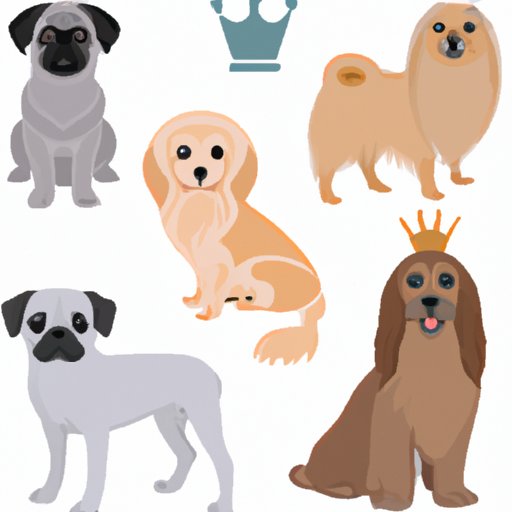Understanding How Many Years Is a Dog Year
You may have heard the common myth that a single year for your dog is equivalent to seven human years. However, this isn’t entirely true. As a dog owner, it’s important to understand how your furry friend ages and how to provide the appropriate care at each stage of their life. In this article, we explore the science behind a dog’s aging process, how to calculate your dog’s age in human years, and how to care for them throughout their lifetime.
The Myth of the Seven Dog Years Rule: Understanding a Dog’s Aging Process
Many people believe that a dog’s lifespan is seven times shorter than a human’s, and therefore, every year of a dog’s life amounts to seven in human years. While this rule of thumb may seem like a convenient way to estimate your dog’s age, it is not an accurate representation of a dog’s aging process.
Unlike humans, dogs do not age consistently throughout their entire lifespan. In their early years, they age much more quickly than humans, but their aging process slows down as they reach their senior years. Smaller dog breeds tend to have a longer lifespan than larger breeds, and as a result, they may experience some age-related health issues differently.
The Science Behind Dog Years: How to Calculate a Dog’s Age in Human Years
So how do you calculate your dog’s age in human years? Here’s a simple method:
Firstly, the first year of your dog’s life is the equivalent of 15 human years. For example, if your dog is one year old, it’s like they’re 15 years old in human years.
Secondly, the second year of your dog’s life is the equivalent of nine human years, making your two-year-old dog about 24 in human years.
From there, you can add four human years for every dog year going forward. However, keep in mind that the breed and size of your dog play a significant role in this calculation. For larger breeds, you may want to add an extra year or two for every dog year.
Does Breed Matter? A Closer Look at Why Some Dogs Age Differently Than Others
Breed plays a significant role in how dogs age. Certain breeds may experience some age-related health issues earlier or later than others. For example, large breeds are more prone to hip dysplasia and arthritis in their senior years, while smaller breeds may have dental issues and require more frequent teeth cleanings as they age.
It’s important to know that not all dog breeds have the same life expectancy. On average, small breeds such as Chihuahuas and Shih Tzus can live up to 16 years, while large breeds like Great Danes have a life expectancy of around 8 years.
From Puppyhood to Seniority: The Stages of a Dog’s Life and How to Care for Them
A dog’s life can be divided into different stages, each with its own unique characteristics and care needs.
Puppyhood: During this stage, dogs are still rapidly growing and developing. They require a high-calorie diet and frequent veterinary visits for shots and checkups. Puppies also need lots of socialization and training to become well-adjusted adult dogs.
Adolescence: Around six months to two years, dogs are considered adolescents. They may experience some behavioral changes and may need additional training to curb unwanted habits.
Adulthood: Dogs are considered adults from two to six years old. They require regular exercise, a balanced diet, and yearly checkups with a veterinarian to maintain their health. This is also the time when any health concerns, such as ear infections and allergies, may begin to manifest.
Middle-age: From six to ten years old, dogs are considered middle-aged. They may start to slow down and require a change in diet or exercise routine to accommodate their aging bodies. Regular checkups with a veterinarian become even more important to ensure any health issues are caught early.
Seniority: Dogs over ten years old are considered seniors. They may experience some age-related health issues that require more frequent veterinary visits. It’s important to adjust their diet and exercise routine to their needs and provide them with a comfortable living environment.
The Importance of Age-Appropriate Care: Catering to Your Dog’s Changing Needs Over Time
As your dog ages, their needs will change. It’s essential to provide them with age-appropriate care to ensure they remain healthy and happy. For example, older dogs may need softer food or supplements to support their joint health.
It’s also important to take note of any changes in your dog’s behavior or health and report them to your veterinarian. Catching any health issues early can significantly improve your dog’s quality of life and lifespan.
Myths and Misconceptions: Debunking Common Beliefs About a Dog’s Lifespan and How to Extend It
As a dog owner, there are many myths and misconceptions about a dog’s lifespan that you may have heard. One common myth is that feeding your dog a raw food diet will extend their lifespan. However, there is no scientific evidence to support this claim.
Extending your dog’s lifespan is possible through proper nutrition, exercise, and regular veterinary care. Keeping your dog at a healthy weight, providing regular exercise, and avoiding harmful toxins such as tobacco smoke can all contribute to a longer lifespan.
Conclusion
Calculating how many years is a dog year is not as simple as the commonly touted “seven dog years rule.” Factors such as breed, size, and age all play a crucial role in a dog’s lifespan. By understanding the science behind a dog’s aging process and providing age-appropriate care, you can ensure that your furry friend lives a long and happy life.
Remember to provide regular veterinary checkups, a balanced diet, and exercise routine tailored to your dog’s needs. By doing so, you can watch your dog grow and mature alongside you and your family.
